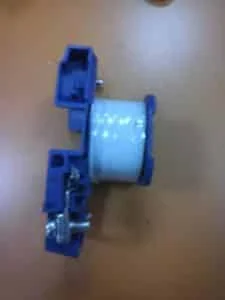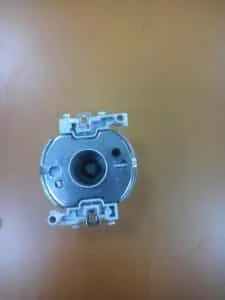The AC contactors differ from the DC contactors in their construction, arc extinction, and usage in a circuit. In this article, let us discuss the major differences between AC contactors and DC contactors.
Contactors are electrically controlled switching devices. They are used to switch electric motors, lights, reactors, capacitors, heating loads, EV charging systems, UPS, and several other loads. They consist of an electromagnet, a set of power contacts, and a spring enclosed inside an enclosure.
A contactor can be called a DC contactor when its power contacts are designed to carry and break DC loads and when it is capable of extinguishing DC arcs. The magnetic coils of the contactors can also be DC. The construction of the DC coil is totally different from that of the AC coil.
Here in this article let us discuss the difference between AC contactors and DC contactors as well as the difference between AC and DC coils.
Difference between AC contactors and DC contactors
| Property | AC contactors | DC contactors |
|---|---|---|
| Core structure | The magnetic core is made of laminated silicon sheet steel to reduce the eddy current and hysteresis. | DC contactor coils are made of cast iron and do not have lamination, since eddy currents are not generated in DC. |
| Heat generation in core | Heat is generated in an AC contactor core due to losses. The silicon steel laminations prevent overheating. | Due to the absence of core losses in a DC coil, core laminations are not required. |
| Shape of core | E shape | U shape |
| Freewheeling diode | There is no risk of damage due to high voltage during instantaneous interruption of current flow through AC coils. | DC contactors possess a risk of generating a high voltage across their terminals when the current flow is suddenly cut off. In order to overcome, this issue. a free-wheeling diode is used. |
| Number of coils | Less number of turns. | DC contactors have a comparatively greater number of poles than AC contactors. |


Randers Kommune
Fort Lewis College
PCS